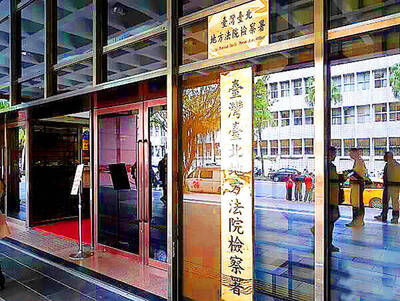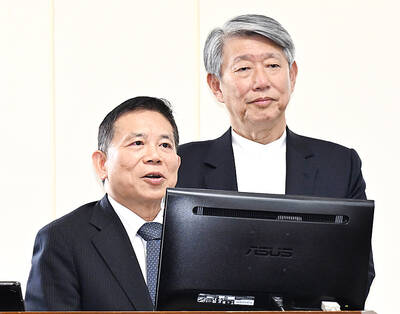Here’s a list of national domestic priorities, in no particular order: Stimulate the economy, improve health care, offer fast Internet connections to all of our schools, foster development of advanced technology. Oh, and let’s not forget, we’d better do something about the budget deficit.
Now, suppose that there were a way to deal effectively with all of those things at once, without hurting anyone. And suppose that it would make everyone’s smartphone work better, too. (I’ll explain that benefit shortly.)
I know that this sounds like the second coming of voodoo economics, but bear with me. This proposal involves no magical thinking, just good common sense: By simply reallocating the way we use the radio spectrum now devoted to over-the-air television broadcasting, we can create a bonanza for the government, stimulate the economy and advance all of the other goals listed above. Really.
The reason for this golden opportunity may be in your purse or pocket: that smartphone to which you could well be addicted. The iPhone, the BlackBerry and competing devices are already amazing technologies. But precisely because of the nifty features they offer, like the ability to text photos, stream video and provide GPS directions, the radio spectrum is looking as crowded as Times Square on New Year’s Eve. Demand for spectrum is growing rapidly — a trend that will surely continue.
The problem is that the usable radio spectrum is limited and used inefficiently. Think of it as a 100-lane highway with various lanes set aside for particular uses, including AM and FM radio, TV and wireless computer technology. The government — specifically, the Federal Communications Commission (FCC) — is in charge of deciding which devices use which lanes.
Because we can’t create additional spectrum, we must make better use of the existing space. And the target that looks most promising in this regard is the spectrum used for over-the-air television broadcasts.
These frequencies are very attractive on technological grounds. People in the industry refer to them as “beachfront property” because these low-frequency radio waves have desirable properties: They travel long distances and permeate walls.
We have already allocated parts of this spectrum for mobile wireless, and the FCC recently auctioned some other parts for US$19 billion. That has left 49 channels for over-the-air television.
Why is the current use of this spectrum so inefficient?
First, because of the need to prevent interference among all the stations, only 17 percent of it is actually allocated by the FCC for full-power television stations. The so-called white space among stations is used for some limited short-range applications like wireless microphones.
Second, over-the-air broadcasts are becoming obsolete. Already, 91 percent of American households get their television via cable or satellite. So we are using all of this beachfront property to serve a small and shrinking population.
Suppose we put this spectrum up for sale. (The local stations do not “own” this spectrum. They have licenses granted by the FCC.) Although the details of how to conduct this auction are important, they don’t make compelling reading on a Sunday morning. Interested readers should examine a detailed proposal made to the FCC by Thomas Hazlett, a professor at the George Mason University School of Law who was formerly the FCC’s chief economist.
Hazlett estimates that selling off this spectrum could raise at least US$100 billion for the government and, more important, create roughly US$1 trillion worth of value to users of the resulting services. Those services would include ultrahigh-speed wireless Internet access (including access for schools, of course) much improved cell phone coverage and fewer ugly cell towers. And they would include other new things we can’t imagine any more than we could have imagined an iPhone just 10 years ago.
But some compelling technology that could use these frequencies already exists, like wireless health monitoring — to check diabetics’ blood sugar regularly, for example — and remote robotic surgery that can give a patient in Idaho a treatment like that available in New York or Chicago.
Who would oppose this plan? Local broadcasters are likely to contend that they are providing a vital community service in return for free use of the spectrum that was put in their hands decades ago. Whether the local news or other programs are vital services is up for debate, but their value isn’t the issue, because they can be made available via cable, satellite and other technologies, including improved broadband.
Say there are 10 million households that still get their television over the air, including those that can’t afford cable or satellite and some that generally just don’t care for what’s on TV. (Yes, there are people who don’t like American Idol.) But about 99 percent of these households have cable running near their homes, and virtually all the others, in rural areas, could be reached by satellite services. The FCC could require cable and satellite providers to offer a low-cost service that carries only local channels, and to give vouchers for connecting to that service to any households that haven’t subscribed to cable or satellite for, say, two years.
Hazlett estimates that US$300 per household should do it: That amounts to US$3 billion at most. Compared with the gains from selling off the spectrum, it’s a drop in the bucket. Or, as an interim step, we could reduce the number of channels available in a community from 49 to, say, 5.
I know that this proposal sounds too good to be true, but I think the opportunity is real. And unlike some gimmicks from state and local governments, like selling off proceeds from the state lottery to a private company, this doesn’t solve current problems simply by borrowing from future generations. Instead, by allowing scarce resources to be devoted to more productive uses, we can create real value for the economy.
Economists are fond of saying that there is no such thing as a free lunch. Here we have an idea that is even better than a free lunch: being paid to eat lunch. More paid-lunch ideas will be coming in future columns.
Richard Thaler is a professor of economics and behavioral science at the Booth School of Business at the University of Chicago.

Intelligence agents have recorded 510,000 instances of “controversial information” being spread online by the Chinese Communist Party (CCP) so far this year, the National Security Bureau (NSB) said in a report yesterday, as it warned of artificial intelligence (AI) being employed to generate destabilizing misinformation. The bureau submitted a written report to the Legislative Yuan in preparation for National Security Bureau Director-General Tsai Ming-yen’s (蔡明彥) appearance before the Foreign Affairs and National Defense Committee today. The CCP has been using cognitive warfare to divide Taiwanese society by commenting on controversial issues such as Taiwan Semiconductor Manufacturing Co’s (TSMC, 台積電) investments in the

INVESTIGATION: The case is the latest instance of a DPP figure being implicated in an espionage network accused of allegedly leaking information to Chinese intelligence Democratic Progressive Party (DPP) member Ho Jen-chieh (何仁傑) was detained and held incommunicado yesterday on suspicion of spying for China during his tenure as assistant to then-minister of foreign affairs Joseph Wu (吳釗燮). The Taipei District Prosecutors’ Office said Ho was implicated during its investigation into alleged spying activities by former Presidential Office consultant Wu Shang-yu (吳尚雨). Prosecutors said there is reason to believe Ho breached the National Security Act (國家安全法) by leaking classified Ministry of Foreign Affairs information to Chinese intelligence. Following interrogation, prosecutors petitioned the Taipei District Court to detain Ho, citing concerns over potential collusion or tampering of evidence. The

‘COMPREHENSIVE PLAN’: Lin Chia-lung said that the government was ready to talk about a variety of issues, including investment in and purchases from the US The National Stabilization Fund (NSF) yesterday announced that it would step in to staunch stock market losses for the ninth time in the nation’s history. An NSF board meeting, originally scheduled for Monday next week, was moved to yesterday after stocks plummeted in the wake of US President Donald Trump’s announcement of 32 percent tariffs on Taiwan on Wednesday last week. Board members voted to support the stock market with the NT$500 billion (US$15.15 billion) fund, with injections of funds to begin as soon as today. The NSF in 2000 injected NT$120 billion to stabilize stocks, the most ever. The lowest amount it

NEGOTIATIONS: Taiwan has good relations with Washington and the outlook for the negotiations looks promising, Minister of Economic Affairs J.W. Kuo said Taiwan’s GDP growth this year is expected to decrease by 0.43 to 1.61 percentage points due to the effects of US tariffs, National Development Council (NDC) Minister Paul Liu (劉鏡清) said at a meeting of the legislature’s Economics Committee in Taipei yesterday, citing a preliminary estimate by a private research institution. Taiwan’s economy would be significantly affected by the 32 percent “reciprocal” tariffs slapped by the US, which took effect yesterday, Liu said, adding that GDP growth could fall below 3 percent and potentially even dip below 2 percent to 1.53 percent this year. The council has commissioned another institution